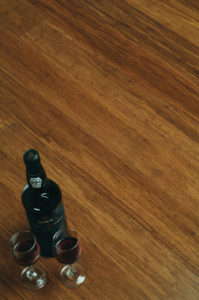Because of its green story as well as its durability, few flooring choices have been more popular than bamboo. And while this alternative has been around for decades, it is only now that so many are learning of its attributes. But it is just that surge in popularity and lack of knowledge that certain unscrupulous manufacturers are trying to take advantage of as they try to pass off low-grade, inferior product as quality flooring.
As Ann Knight, executive vice president and global brand director for Teragren, noted, not all bamboo flooring is created the same. The following are a few questions she recommends retailers, as well as consumers, ask before buying:
- When was the bamboo harvested?
- Which specie was used?
- How hard is it on the Janka scale test?
- Is the bamboo flooring coming from a reputable manufacturer, or from an importer or trading house purchasing from any factory based primarily on the lowest price?
- What will I get in terms of customer service?
- How truly environmentally friendly is the flooring?
- How does it affect indoor air quality?
- And, ultimately, will the product offer lasting value?
“Moso bamboo is the best choice for flooring,” she said. “It takes five-and-a-half to six years to reach maturity—and, when properly harvested, traditional (vertical/flat grains) bamboo flooring can average 25% harder than red oak. Bamboo flooring of lesser quality may be as soft as pine or fir and appear gray or dull if the wrong species were used or the bamboo was harvested too early.”
And, while much of the bamboo sold in North America is grown in China, Knight noted quality control standards in China, where most bamboo flooring is also produced, are inconsistent. “There is little industry oversight, and neither China nor the U.S. has created an independent grading system. Consumers should ask retailers or other suppliers if the manufacturer uses a system of quality control and grading standards.”
Ben McNabb, Mohawk’s hard surface brand manager, said bamboo is gaining popularity because of its look and green attributes. But because it’s a grass, not a wood, traditional bamboo is relatively soft—and that can have an impact on durability.
“Mohawk has addressed this problem with bamboo flooring that is harder than oak—and uses 100% of the bamboo stalk. Our strand woven styles have been tested to be twice as hard as domestic oak. And our products are manufactured using all parts of the bamboo stalk for optimum green benefits, and they meet European E-1 Standards for low formaldehyde emissions. They can also contribute LEED points.”
According to Gary Keeble, marketing manager for US Floors, the maturity of the bamboo used to make the floor is a big deal. “Some larger national retailers will market their bamboo as four-year-old bamboo or even less on some products. Immature bamboo hasn’t developed the hardness and density that is characteristic of a mature bamboo. We specify bamboo with six years of maturity for all of our bamboo floors, traditional and strand woven alike.”
Keeble warned that product made from immature bamboo looks just like product made from mature bamboo. “However, product made of immature  bamboo will likely dent, make for an unhappy consumer and give the category a bad image. The best way to tell is to do your homework; usually the biggest giveaway is the price tag.”
bamboo will likely dent, make for an unhappy consumer and give the category a bad image. The best way to tell is to do your homework; usually the biggest giveaway is the price tag.”
Like Keeble, Rick Gill, sales and marketing manager for Dasso, said telling the good stuff from the bad is difficult by the naked eye. “Unfortunately, like anything else, it is not easy to differentiate bamboo of lesser quality by looking at it. For example, a diamond compared to zirconium.”
So, what are some general signs to identify quality bamboo? “The heavier bamboo planks indicate they are denser and harder,” he said, “and the cell structure directly under the coating surface is more compact. Also, lesser-quality bamboo is glued with high formaldehyde glue with added starch, which will delaminate under humid conditions.”
A good idea, Gill noted, is to research the bamboo product you are interested in. “Know the properties of the product, how it’s produced, familiarize yourself with the different structures and composition, handle the product to feel the weight in comparison to another product and, last but not least, you get what you pay for. Cheaper is never better in the long run.”
Certainly, McNabb said, warranty and recommended applications are important. And, with the introduction of strand woven bamboo, there are more styling options available to consumers. “For example, Mohawk’s strand woven bamboo features hand scraped finishes—something not possible with traditional bamboo. We offer our Uniclic glueless installation system with strand woven bamboo to make installation easier.”
What can bamboo manufacturers do in order to ensure they produce a quality product? At Green Choice Flooring, the company makes sure that quality specifications are met at every step in the process. “We perform inspections prior to initial shipment, have regular factory inspections, site visits by U.S.-based personnel and audits to ensure compliance with our specifications,” said a spokesperson for the company. “We perform further quality control inspections prior to receiving material into stocked inventory. We also perform U.S.-based laboratory testing on materials—prior to and after deciding to add products to our offerings.”
-Louis Iannaco
